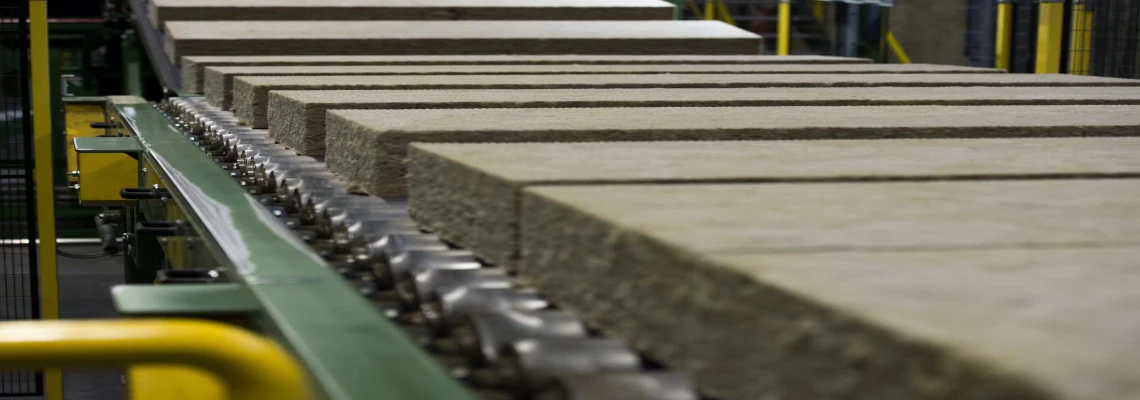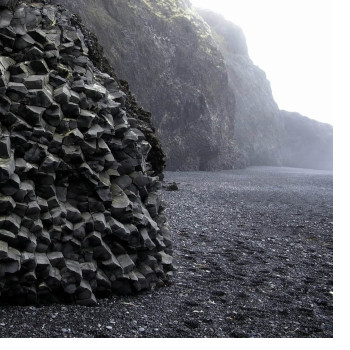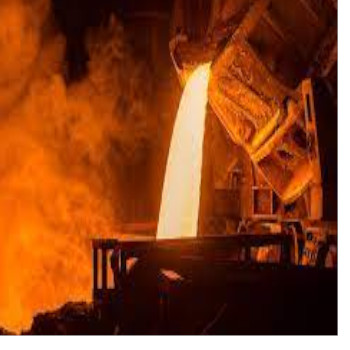
X REASONS WHY ROCK WOOL INSULATION IS SAFE TO USE*
When we insulate our homes, we rarely ask ourselves if the product we're using is safe for us. Instead, we tend to focus on factors like price, availability, and its location near me. In this article, however, we'll concentrate on the safety of using rock wool insulation, including whether it is entirely safe for humans, what potential side effects it may cause if any, and how it can affect our health in the long run. We'll also provide some simple methods to avoid any undesirable effects of using this insulation. Finally, we'll answer the question of whether rock wool insulation is 100% safe to use. Let’s dig deeper into the science.
WHAT IS STONE WOOL?
Stone wool is an inorganic product manufactured from a carefully controlled mix of raw materials, such as stone or silica which are heated to a high temperature until molten. Production techniques are based on spinning the molten mineral melt which goes to the fiberizing area.
Fiberizing combines a mechanical centrifugal drawing of the molten melt through a rotating device drilled with holes, or through rotating cylinders, and a fibre attenuation by means of high temperature gas jet streams.
WHAT IS ROCK WOOL INSULATION MADE OF?
To answer all of the above questions, it's probably best to know what rock wool insulation is made of. By understanding its composition, we can examine each component and determine if it's safe for humans.
Rock wool is produced from basalt by melting it at a temperature of over 1400°C. Here are the basic ingredients of rock wool mineral insulation:
BASALT
 Basalt is an igneous rock that typically forms from volcanic eruptions. It is usually black, but can also be brown or dark green when weathered. Basalt insulation is nothing more than an environmentally friendly material based on rocks obtained under conditions of high temperature and special mixing of components.
Basalt is an igneous rock that typically forms from volcanic eruptions. It is usually black, but can also be brown or dark green when weathered. Basalt insulation is nothing more than an environmentally friendly material based on rocks obtained under conditions of high temperature and special mixing of components.
It is formed from magma that is melted in the mantle of the Earth and contains amphiboles, plagioclase, pyroxenes, and often olivine. It tightly covers the hot core of the Earth and during volcanic eruptions, basalt flows out from the depths of the Earth under tremendous pressure and forms lava when it reaches the surface. After it cools, it forms a very hard surface. Basalt makes up the Earth's crust under the ocean floor, where it sometimes emerges as volcanic cones on the surface (e.g. in Hawaii). Interestingly, basalt is also found on the Moon.
Basalt can be found in various locations across the UK. Some notable examples include:
- Staffa Island off the west coast of Scotland, which features unique basalt pillars and caves
- The Isle of Skye in Scotland, which has several basalt formations including the iconic Cuillin Mountains
Basalt, which is the primary ingredient in rock wool insulation, is generally considered safe for human use. It is a natural, non-toxic material that is commonly used in construction, and landscaping. Only high concentrations of airborne dust may cause unpleasant deposition of dust in ears, eyes and upper respiratory tract and may also reduce visibility in the workplace.
Therefore, it's essential to take proper safety precautions during the installation process, such as wearing protective gear like masks and gloves.
IS BASALT SAFE FOR HUMANS?
- Not classified as a hazardous substance according to criteria of NOHSC.
- Naturally occurring substance with no inherent toxicity or toxic contaminants.
- Products manufactured from basalt pose no ecological threat.
- Products are persistent, ecologically friendly, are non-biodegradable and suitable for landfill.
- Basalt wool cannot affect the human body in any way if it is outside the living quarters, for example, on the street.
BLAST FURNACE SLAG
 Generally speaking, rock wool insulation is composed of a minimum of 70% natural rock. The remaining volume of raw material is blast furnace slag. According to Sciencedirect.com
Generally speaking, rock wool insulation is composed of a minimum of 70% natural rock. The remaining volume of raw material is blast furnace slag. According to Sciencedirect.com
Slag is a byproduct of metals like iron, cooper, lead and nickel. It is made by heating coal or oil in the absence of air. The chemical composition of blast furnace slag is similar to the composition of natural mineral rocks and is recognized as a potential raw material in stone wool production. In fact, using blast furnace slag in stone wool production reduces the consumption of natural minerals.
Mass production in the integral steel work, which implies steady operation of the blast furnace, and therefore the high production of blast furnace slag are a safe raw material for the production of stone wool.
IS BLAST FURNACE SLAG SAFE FOR HUMANS?
- Harmful if swallowed.
- Causes skin irritation.
- Causes serious eye damage and possible blindness.
- Irritating or corrosive to the mouth.
- Its aspiration into the lungs occurs during vomiting, severe lung damage may result.
COKE
Coke is used as fuel for the smelting process. Smelting is a process of heating and melting materials to extract a desired metal or mineral. In the case of basalt, smelting involves heating the rock to high temperatures to extract metals such as iron or aluminium from the molten basalt. This process is typically carried out in a furnace using a combination of fuel and an oxidising agent to maintain the necessary temperature for smelting. The smelting process in basalt melting is almost the same as the operational procedure in iron smelting using an upright furnace.
IS COKE SAFE FOR HUMANS?
-Coke is generally safe for humans when used properly and in appropriate amounts.
-Prolonged exposure to high levels of coke dust or fumes can pose health risks, especially to those with pre-existing respiratory conditions such as asthma or chronic bronchitis.
-The process of producing coke can release harmful pollutants into the air and water, which can have negative effects on human health and the environment.
- It is important to take proper precautions when working with coke, such as wearing protective gear and following safety guidelines, to minimise exposure to harmful substances.
CONCLUSION
In conclusion, it can be stated that some of the ingredients required for the production of rock wool can be hazardous to human health, but only if their production technology is inappropriate. Often, this is due to alleged production cost savings, which are adopted by dishonest companies. Therefore, it is important to choose well-known brands with a long history in the market, whose products are manufactured according to all standards. Only then can we be sure that mineral wool is safe for our health. In the UK, the most well-known company producing such products is a company called ROCKWOOL.
Skillfully manufactured in accordance with all standards, rock wool poses no significant risk to human health, as the material's exceptional strength prevents particles from detaching from the ecowool slab. Therefore, exposure to rock wool is not likely to cause any serious harm.
Related articles:
MINERAL WOOL INSULATION. THE UGLY TRUTH?
BIBLIOGRAPHY:
1. journallijar.com, Raif Seferović,Aida Imamović, Derviš Mujagić, Marina Jovanović ,Amel Zahirović, And Dejana Kasapović, University of Zenica, International journal of advanced research(IJAR), ISSnN:2320-5407, ‘PROPERTIES OF STONE WOOL PRIMARY FIBER LAYERS PRODUCED WITH DIFFERENT CONTENTS OF BLAST FURNACE SLAG’, Published May 2019, accessed April 20 2023.
2. algoma.com, Algoma Steel Inc, ‘Blast Furnace Slag’, published, November 30, 2018, accessed April 20, 2023.
3. iopscience.iop.org, Kusno Isnugroho, David C Birawidha, Yusup Hendronursito, Muhammad Amin, Muhammad Al Muttaqii, R Agung Efriyo Hadi2, Muhammad Fadil
Fazma, ‘IOP Conference Series: Materials Science and Engineering’
4. youtube.com, Belinda Carr, ‘Mineral wool vs fiberglass insulation | everything you need to know’, 3-1-1992, mpeg, accessed December 02 2022
5. youtube.com, Lowe's Home Improvement, ’Why It Works: ROCKWOOL Stone Wool Insulation’, mpeg, accessed December 6, 2022
*All the information provided in the content published on Insulationgo blog is for informational and educational purposes only. Insulationgo LTD makes every effort to ensure the accuracy and timeliness of the content, but we do not assume any responsibility for any errors or omissions.
The information presented on this blog should not be considered as professional advice or a substitute for consulting relevant experts. Before making any purchase decisions or taking action based on the information presented here, it is strongly recommended to contact the product manufacturer directly to verify the details and ensure its suitability for your specific needs.
By using this blog, you acknowledge and agree that Insulationgo LTD shall not be held liable for any damages, losses, or inconveniences arising from the use or reliance on the information provided herein. This limitation of liability applies to all users of the blog, including but not limited to visitors, readers, and subscribers.










































































































